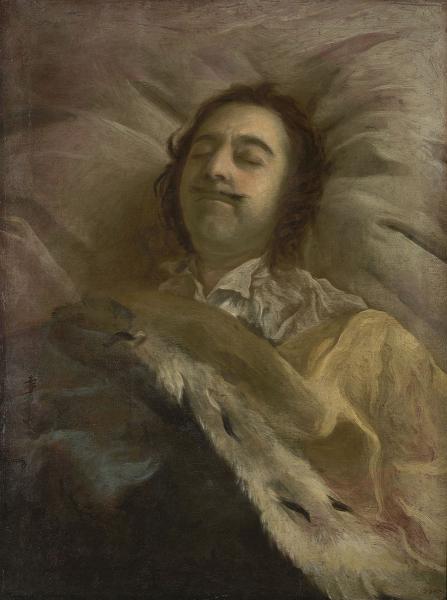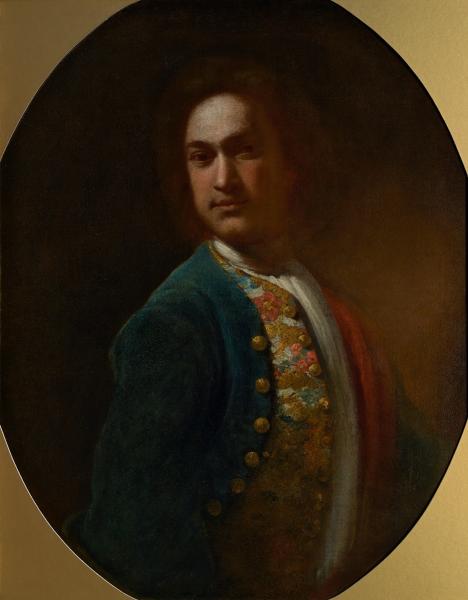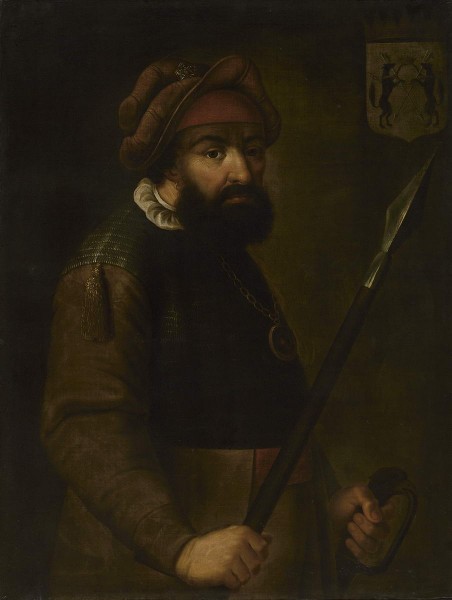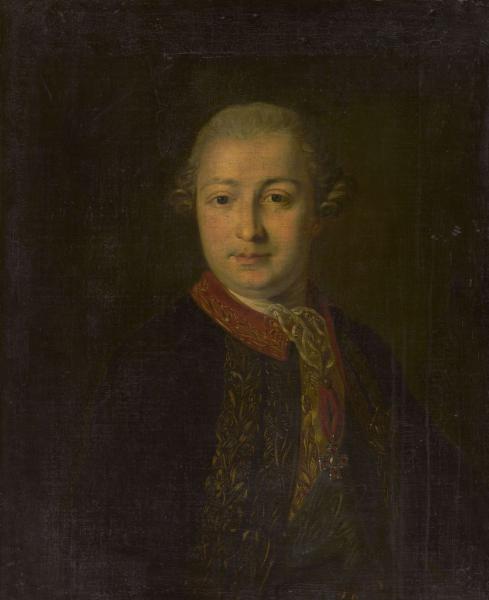The artist is Nikitin

Nikitin’s picture is perceived as a requiem for "Father of the Fatherland". Immediately after the death of Peter Nikitin, he was invited to capture the dead emperor. On the portrait, the king is depicted, dressed in a white shirt, covered with yellowish drapery and blue with an ermine mantle. The image of Peter I is full of great solemnity. The portrait is permeated with the mood of deep sincere grief: for Nikitin Peter was not only the emperor, but a close and well -known person whose death was personal loss for the artist. The master traces every wrinkle, every fold, every strand of hair, as if feeling his responsibility to the upcoming generations. Death already distorted Peter’s face, but, looking at the image of the dead emperor, one can understand his lifetime greatness.
The portrait was transferred in 1762 by order of Empress Catherine II of the old wooden Winter Palace on Nevsky Prospekt near the police bridge to the Imperial Academy of Arts. Its author was called and. N. Nikitin, and. -G. Tannauer, Andrei Matveev. Modern researchers consider the picture unconditional work and. N. Nikitin, which is confirmed by her technological analysis.
Peter I the Great (Petr Alekseevich; May 30 / June 9, 1672, Moscow − January 28 /8 February, 1725, St. Petersburg) − The last king of all Rus’ from the Romanov dynasty (from 1682) and the first Emperor All -Russian (since 1721). He was the fourteenth child of Tsar Alexei Mikhailovich, but the first from the second wife, Queen Natalia Kirillovna (nee Naryshkina). The first of the Russian kings in 1698 began large -scale reforms of the Russian state and public way. Reigned from April 27 / May 7, 1682 to January 28 / February 8, 1725. The 400th anniversary of the Romanov house. SPb, 2013. With. 112.
Peter I (1672–1725) is the youngest son of Tsar Alexei Mikhailovich and his second wife Natalia Kirillovna Naryshkina. In 1682, after the death of the older brother Fedor, he inherited the Tsarist throne with his brother Ivan. Since 1689, it has been ruled uncertainly.
Since 1721 – the first Russian emperor.


